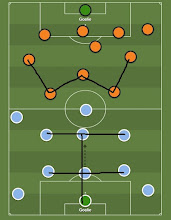The 1989 FIFA U-20 World Cup marked the dawn of Portugal’s resurgence in world football, as a new generation delivered the nation’s first international title.
Portugal had enjoyed a golden period in the mid-1960s, when Eusébio inspired them to the World Cup semi-finals in 1966, but the national side then faded from prominence. A revival began in the 1980s at club level, with Benfica and Porto reaching European finals—Porto famously winning the European Cup in 1987. The national team also showed promise at Euro 1984, reaching the semi-finals, before suffering a humiliating collapse at the 1986 World Cup amid the “Saltillo scandal.” Failure to qualify for Euro 1988 left Portuguese football in crisis. Against that backdrop, the triumph of Carlos Queiroz’s promising young squad in Saudi Arabia offered a glimpse of a brighter future for the Seleção das Quinas.
Key Facts –
1989 Tournament
* Held from 16 February to 3 March 1989, with 16 teams divided into four
groups.
* Matches were staged across Taif, Jeddah, Dammam and Riyadh.
* Europe was represented by six teams: Soviet Union (winners of the 1988
UEFA U-18 Championship), Portugal (runners-up), semi-finalists East Germany and
Spain, plus Czechoslovakia and Norway, who won play-offs against fellow
quarter-finalists.
* The United States replaced Mexico, who had fielded four overage players
at the 1988 CONCACAF U-20 Championship. As punishment, Mexico were banned from
all FIFA competitions for two years, missing the 1990 World Cup.
* Unusually, the tournament featured no representative from Oceania. Australia and New Zealand were forced into a play-off against Asian sides Syria and Qatar, the runners-up and third-placed finishers at the 1988 AFC U-20 Championship. Syria emerged victorious to claim the single available slot.
The
Remarkable Runs of Iraq, Nigeria and Portugal
Nigeria stunned the world with a remarkable run, eliminating heavyweights Soviet Union in the quarter-finals and the United States in the semi-finals to reach their first final.
Portugal, meanwhile, navigated a daunting knockout path. Jorge Couto and his teammates overcame Colombia and then Brazil to book their place in the decider. In the final, the Seleção clinched a 2-0 victory over Nigeria thanks to goals from Abel Silva and Couto, securing a historic triumph that signalled Portugal’s re-emergence on the global stage.
Tournament Highlights
Group Stage final standings (The one in bold advanced to the knockout stage)
|
Grup A |
Grup B |
Grup C |
Grup D |
|
Portugal |
USSR |
Brasil |
Iraq |
|
Nigeria |
Colombia |
USA |
Argentina |
|
Czechoslovakia |
Syria |
East Germany |
Norway |
|
Saudi Arabia |
Costa Rica |
Mali |
Spain |
** = penalties
* = extra time
-
Portugal
vs Colombia 1-0
-
USSR
vs Nigeria 4-4 (3-5)**
-
Brasil
vs Argentina 1-0
-
Iraq
vs AS 1-2
Semifinal:
-
Portugal
vs Brasil 1-0
- Nigeria vs USA 2-1
3rd place Playoff : Brasil vs USA 2-0
Final:
Top Scorer: Oleg Salenko
(USSR) – 5 gol
MVP: Bismarck (Brasil)
From Youth to Stardom
The 1989 FIFA U-20 World Cup produced a number of players who went on to become stars in the 1990s and early 2000s. Among them was Diego Simeone, former Argentina captain and now manager of Atlético Madrid, as well as Fernando Couto, who shone at Parma and Lazio, and Leonardo, the Brazilian winger who would feature at the 1994 World Cup.
Norway also introduced a promising generation, including Lars Bohinen, Henning Berg and Roar Strand, while the Soviet Union squad contained several figures who later became key players for Russia after the collapse of communism. They included Viktor Onopko, Yuri Nikiforov and Oleg Salenko, the striker who famously finished as top scorer at the 1994 World Cup in the United States.
Here are some of the players from the 1989 tournament in Saudi Arabia who went on to establish themselves at senior level.
|
Players |
World Cup
editions (senior) |
|
Mutiu Adepoju
( |
1994, 1998,
2002 |
|
Joao Pinto ( |
2002 |
|
Fernando Couto
( |
2002 |
|
Fahad Al
Mehalel (Saudi) |
1994, 1998 |
|
Ahmed Madani (Saudi) |
1994, 1998 |
|
Abdullah
Al-Dosari (Saudi) |
1994 |
|
Bismarck
(Brasil) |
1990 |
|
Leonardo
(Brasil) |
1994, 1998 |
|
Steffan Freund
(Germany) |
1998 |
|
Kasey Keller
(USA ) |
1990, 1998,
2002, 2006 |
|
Diego Simeone
( |
1994, 1998,
2002 |
|
Henning Berg
(Norway) |
1994, 1998 |
|
Lars Bohinen
(Norway) |
1994 |
|
Stig Inge
Bjornebye (Norway) |
1994, 1998 |
|
Roar Strand
(Norway) |
1994, 1998 |
|
Ovyind
Leonhardsen (Norway) |
1998 |
|
Santiago
Canizares (Spain) |
1998, 2006 |
|
Albert Ferrer
(Spain) |
1994, 1998 |
|
Giovanis
Cassiani (Colombia) |
1990 |
|
Jorge
Bermundez (Colombia) |
1998 |
|
Jose Santa (Colombia) |
1998 |
|
Oscar Cordoba
(Colombia) |
1994 |
|
Ivan
Valenciano (Colombia) |
1994 |
|
Oleg Salenko
(Russia) |
1994 |
|
Omar Tetradze
(Russia) |
1994 |
|
Viktor Onopko
(Russia) |
1994, 2002 |
|
Yuri Nikiforov
(Russia) |
1994, 2002 |
|
Ronald
Gonzalez (Costa Rica) |
1990 |
|
Jose Porras
(Costa Rica) |
2006 |


Comments
Post a Comment